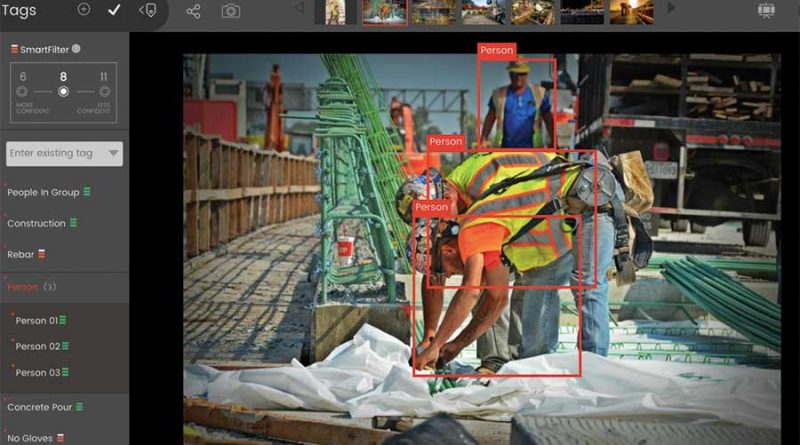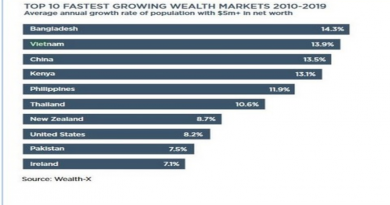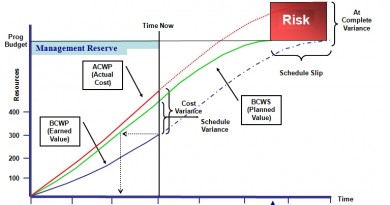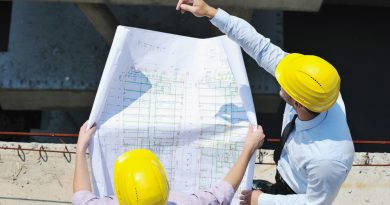Industry Finds New Innovations to Stay Ahead of COVID-19
The way construction work gets done is rapidly evolving to meet the challenges of the COVID-19 pandemic. From maintaining social distancing on jobsites to retooling existing manufacturing to meet new demand for hospitals and sanitation, the industry is having to get more inventive at all levels. But quick turnarounds on new facilities and a surprising willingness to upend Jobsite cultures is offering bright spots in an otherwise grim picture.
[For the report of the impacts of the COVID-19 pandemic on Vietnam Construction, click here]
One of the biggest shifts in thinking is in reassessing how many interactions need to involve face-to-face meetings. Rental equipment deliveries are decidedly low-tech and up close, but steps are now being taken to reduce contact beyond shifting to mobile apps from paper documents. Equipment rental firms remain open as essential businesses that need to interact with their customers, so many have deployed practices to reduce contact and adhere to social distancing conventions.
For example, in addition to its regular inspections during delivery, United Rentals announced it is disinfecting all surfaces and controls, and it will require a “last touch” cleaning of all surfaces the delivery driver touched before handoff.
Beyond basic social distancing, the need to improve sanitation and hygiene on construction sites was already an issue before the current crisis, and contractors are applying their expertise to the problem. Mechanical and plumbing contractor UMC Inc. has applied its design and installation skills to making touch-free wash stations for construction sites. The two- and four-sink stations are built at the company’s Mukilteo, Wash., facility. The stations are available for purchase and can easily be transported by crane or a forklift.
An ongoing shortage of critical hospital equipment across the nation prompted natural-gas-driven fuel cell manufacturer Bloom Energy (ENR 7/8/13 p. 36) to retool its Sunnyvale, Calif., facility to repair and service badly needed ventilators for hospitals treating COVID-19 patients. Working directly with the state of California, Bloom Energy has spent the past few weeks repairing old ventilators in the state’s stockpile that were otherwise unusable and out
of service.
“I don’t care how difficult this problem is,” said Bloom Energy CEO and founder K.R. Srindhar in a press conference with Calif. Gov. Gavin Newsom (D). “We will solve it, and when we look back, it’s only going to have happened because we have this can-do attitude.”
Modular Construction Steps Up
In an effort to increase hospital bed capacity, some contractors and designers have developed modular solutions that can be rapidly deployed to health care facilities. The Boldt Company and HGA Design partnered to create prefabricated critical care negative-air-pressure isolation rooms—called STAAT Mods—that can be built at Boldt’s Appleton, Wis., facility and trucked to clients around the country. Boldt is currently building dozens of units for a client in Maryland, which the company says will start shipping April 18. Boldt says it has fielded serious inquiries from at least two dozen potential clients.
Dave Kievet, COO at Boldt, says the company built the concept based on similar prefabricated structures that it recently developed to build a modularized care clinic for Advocate Aurora Health in Chicago. Kievit says the company built a prototype for the clinic starting in late 2019 and was testing the shipping durability of units when the coronavirus pandemic hit the U.S. “The prototype was sitting in our warehouse, and we thought about how we could adapt what we were doing on this clinic and provide something that is needed in a short period of time,” he recalls.
“I don’t care how difficult this problem is. We will solve it, and when we look back, it’s only going to have happened because we have this can-do attitude.”
– K.R. Srindhar, Founder and CEO, Bloom Energy
Typical rooms are around 12 ft deep and 15 ft wide, with two rooms in a modular unit, allowing them to be placed on a standard commercial semi-truck for shipping. Multiple units can be linked with corridors to create full bays.
The units can be enclosed in a fully waterproof exterior and roof. A stripped-down version without the roof or exterior cladding can also be created for units that will be placed inside large facilities, such as convention centers.
Kievet says that initially, it will take up to four weeks to create a complete facility, but with repetition, the process will get faster. “Once this gets rolling, we can put out a full facility in about a week,” he says.
Other companies are also working on modular options. DPR Construction is working with prefabrication and modular companies Digital Build Components and SurePods to deliver temporary facilities in response to the COVID-19 pandemic. Working with its design partners, DPR has created concepts for medical-surgical units, isolation rooms, ICU rooms and behavioral health units.
DPR reports that its units could be deployed in as little as one week, and repurposed shipping containers could be used to house them in the field for months if needed to have them ready for possible peak needs in the future.
Working on a construction site during the COVID-19 pandemic can be a harrowing experience, given the close quarters workers find themselves in. Rules about social distancing, easier to maintain on sidewalks, can be more stressful when clambering around a crowded active jobsite.
Social Distancing Software
Computer vision paired with artificial intelligence is already in use on jobsites, analyzing photos and video to spot safety hazards and identify possible construction errors. But an idea pitched from a construction contractor spurred AI vendor Smartvid.io to add social distancing monitoring to its software’s feature set.
“We wouldn’t have done this if not for a customer asking for it,” says Josh Kanner, CEO and founder of Smartvid.io.
“I just randomly brought up the idea to them,” recalls Jennifer Suerth, vice president of technical services at Pepper Construction. The company’s AI, Vinnie, is already able to identify and tag human beings individually from video or still images. Suerth suggested that since they were already capturing so many images on site, and Smartvid.io’s AI can already detect where workers are and whether they are wearing PPE like safety gloves, it could monitor grouping as well.
“We dropped everything to work on it and were able to turn it around in less than three weeks,” says Kanner. Since the AI Vinnie is already able to perform some proximity detection of workers for normal safety monitoring, it was simply a matter of creating a new tag in the system for the AI to note groups of 10 or more people and other forms of crowding.
Mapping technology vendor Esri and architectural, engineering and geospatial firm Woolpert have built a free app to help airports track and submit reimbursable expenses to the Federal Emergency Management Agency. Able to help complete FEMA’s reimbursement forms, the app also includes an ArcGIS dashboard to provide descriptions, dates, locations, labor hours, materials and equipment used, vendors, invoices, receipts, pictures, and signatures as needed.
The app calculates the value of each task and the reimbursement amount to be received, while aggregating, documenting and saving submissions for each airport. Originally designed for airport authorities, it can work for municipalities or anyone else who needs to file for reimbursements from FEMA.
Borton-Lawson, a Wilkes-Barre, Pa.-based engineering firm, is stepping up remote data collection and visualization to streamline project execution in the current business environment, says CEO Frank Joanlanne. About 48% of the firm’s 2018 revenue was in the petroleum and industrial market, according to its Top 500 Design Firms’ filing.
“The restrictions from COVID-19 have made remote access to sites vital to maintaining operations and project schedules,” says Joanlanne. “Many of our oil and gas clients are relying on 3D laser scanning and drones to capture data from their sites and access it remotely.”
But these scans and documentation can also allow clients in the energy sector to monitor their installations without having to send their own people out. In cases where field teams are permitted to enter the site, “we can complete a thorough 3D laser scan of the facility and immediately provide the client with a virtual 3D representation of the facility, including high-resolution photographs, Joanlanne says. In situations where they do not have access to the facility, they use “drone technology to obtain the necessary site information,” he adds.
“Our clients can then view the processed data and navigate their project sites using readily available software viewers and effectively communicate with their safety, operations, and project engineering staff,” adds Joanlanne. He says his firm was already pursuing this kind of regular documentation, since these processes are only part of a broader shift toward maintaining digital twins of installed systems and infrastructure.
Source: ENR







